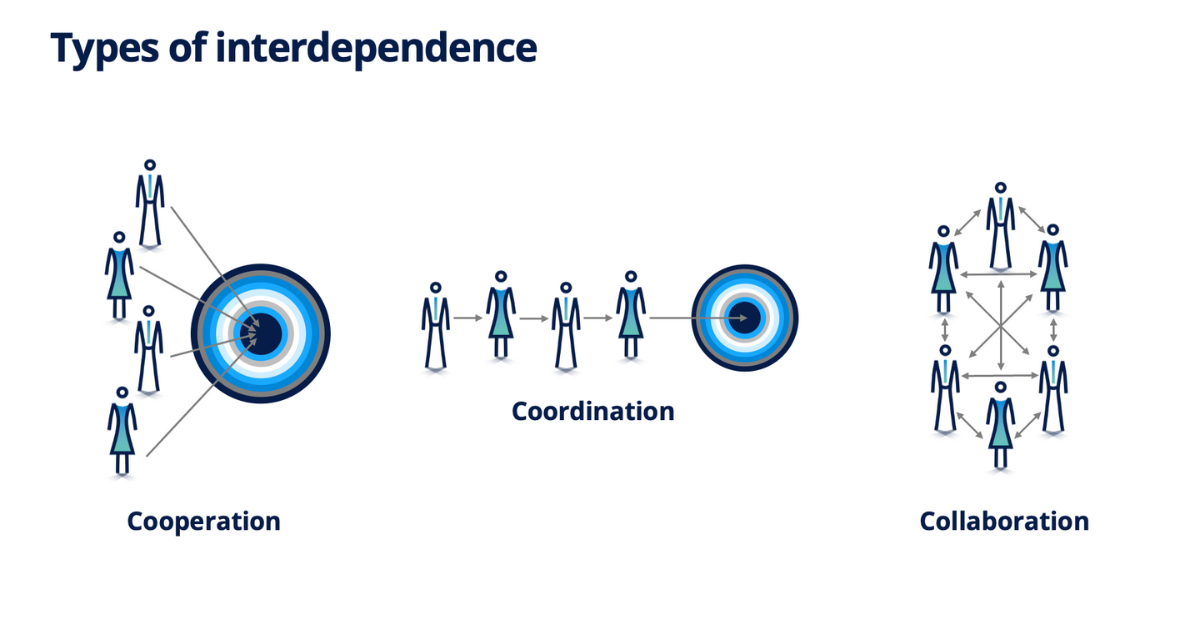Do You Really Want More Collaboration?
Innovation and collaboration—those two words come up nearly every time I ask business leaders what they want to see more of in their organization. It doesn’t take too long to find out that these leaders don’t always know exactly what those words mean. It seems like the desire for “collaboration” is often nothing more than hope for better communication and increased speed.

Do You Really Want More Collaboration?

Innovation and collaboration—those two words come up nearly every time I ask business leaders what they want to see more of in their organization. It doesn’t take too long to find out that these leaders don’t always know exactly what those words mean. It seems like the desire for “collaboration” is often nothing more than hope for better communication and increased speed. It’s true that better communication can lead to more effective collaboration. However, collaboration shouldn’t be the only benefit of improved interdependence. Not only that, but too much emphasis on increased speed can actually counteract effective collaboration. When discussing the need for more collaboration, I’ve found that most leaders are actually looking for something a bit different. I believe they are seeking a type of interdependence. Perhaps these leaders aren’t aware that there are different types of interdependence, which require different behaviors and produce different results.
Together, let’s look at cooperation, coordination, and collaboration. The figure below provides a basic visual of the differences between these three interdependencies and how they function:

Cooperation: Operating together. It’s critical in cooperation that each party work in parallel toward a determined goal to avoid getting in one another’s way. There is a corollary from the world of childhood development called “parallel play,” when two children can play side-by-side and no longer interfere with one another or try to steal one another’s toys. With cooperation, there is actually limited interaction and nothing in the way of sharing. When the goal is clear and each stakeholder stays out of the way of others, things can get done quickly.
Coordination: Prioritizing and ordering together. Coordination implies that everyone understands how their contribution fits into the completion of the task, the priority order of work, and the importance of hand-offs. The goal or outcome is clear and pre-determined. A team may reach a level of tactical execution excellence through coordination, but there is little in the way of creativity. Much of what we call coordination is done through calendaring meetings. The actual process is often associated with a control-style of leadership and teaming. A simple example of this concept is an assembly line, where each person completes their task in succession and hands-off the task.
Collaboration: The total is greater than the sum of its parts. In the figure, collaboration is noticeably different. Firstly, there is no pre-determined outcome or goal, and the arrows between actors point in many directions. The word itself means to “co-labor” or to actually work together, which goes beyond staying out of one another’s way or prioritizing and handing off the work. Collaboration is the realization of synergy in the sense that it requires the input of various viewpoints and approaches in order to develop a new and better experience. To achieve this, significant trust and willingness to share are both required. This type of interdependence also demands an understanding of the strengths of each individual member by the entire team. Thus, true collaboration takes time and a high level of engagement.
The distinction between true collaboration and the desire for leaders to improve communication and speed in their organizations is more significant than mere semantics. This discussion is at the heart of what we want teams to do and how we want them to interact. So what does all of this mean for leaders? Be clear on what type of interdependence you are looking for and realize that when your goal is speed, collaboration may not be what you want or need. But when you are looking for a better solution, a new way of doing things, and input from stakeholders with different points of view, collaboration is indeed what you are after.